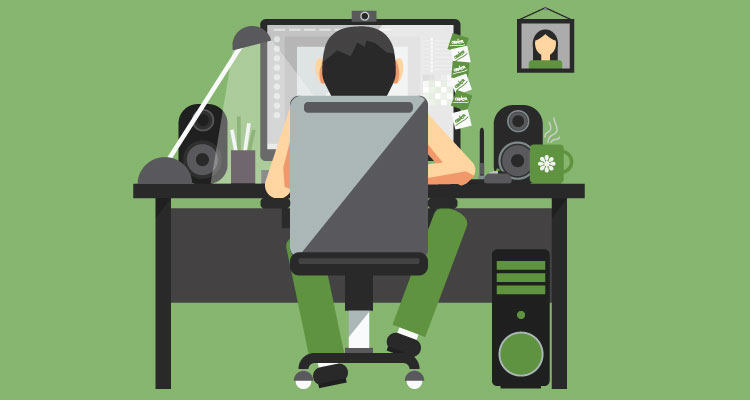From 2015 to 2017, the number of connected homes in the U.S. grew from 17 million to 29 million, according to data from McKinsey. That growth is expected to keep rising, with experts predicting that the smart home market could surpass $158 billion by 2022. However, it isn’t just homeowners who are benefiting from home automation systems, now you can know how to fit smart home technology into your business.
To fit smart home technology into your business means using the same technologies to reduce waste, monitor systems around the clock, and dramatically boost overall efficiency.
Thanks to the programmable ecosystems created by the Internet of Things (IoT), connected home devices can learn how people live and how to enhance their comfort accordingly. For businesses, these devices can automatically optimize an office’s environment by learning when it’s occupied and even how to make its inhabitants most productive.
In a variety of ways — from reducing waste to maximizing productivity — connected devices can help companies directly cut back on inefficient operations. According to Trevor Palmer, SVP of digital lighting networks at Acuity Brands, most businesses can use home automation to turn smart offices into valuable, strategic assets. The key, Palmer says, is to “focus not only on the building but focus on the business. Think about the occupant’s journey and the occupant experience you want.” This can mean everything from choosing an ideal temperature range to utilizing artificial intelligence (AI) assistants.
That optimal occupant experience will look different from one company to another. Consider how smart home technology can benefit your business using the guidelines below.
-
Boost energy efficiency.
One of the most important smart home advantages is the boost in energy efficiency that comes from automating things like environmental control. The market for smart thermostats (including residential, commercial, and industrial segments) is expected to grow at a compound annual growth rate of more than 20% over the next five years, according to ResearchAndMarkets.com.
The ability to automatically monitor energy use throughout a building and adjust things like lighting, temperature and water usage goes a long way toward reducing wasteful energy consumption. Because HVAC solutions tend to use a lot of energy, the emergence of smart thermostats creates an important opportunity for companies to boost efficiency. Smart home thermostats have lowered electricity bills by an average of nearly 25% at the state level.
Smart thermostats can reduce heating and cooling to a minimum when people aren’t in the office and optimize it when they’re present. “Smart thermostats provide one of the most immediate returns on investment in smart home automation technologies,” says Sean Miller, President of PointCentral, a subsidiary of Alarm.com and enterprise property automation solutions provider.
-
Enlist administrative assistance.
Smart home technology comes in many forms, and some of the most popular applications include automated lights, locks, and thermostats. Now more consumers are using virtual assistants to tie all of their connected smart devices together into one cohesive smart home.
Today, 27% of people in the U.S. currently own and use a virtual assistant, such as the Amazon Echo or Google Home. Consumers primarily use them to connect with and command apps without picking up their phones. However, companies can also utilize virtual assistants to schedule meetings, scan through emails, and (like consumers) get important data and information on the fly.
For example, rather than ask your assistant about the weather, you could ask what last quarter’s revenue looked like compared to the quarter before it. At a 2018 data and analytics summit, Gartner analyst Svetlana Sicular pointed out that AI still needs further development before it can emulate human-to-human conversation. But that future can’t be too far away, given the market possibilities for business solutions. “Every single participant [in voice AI] is preparing for the business,” Sicular says. “Every single one is creating business capabilities.”
-
Minimize security risks.
Virtual assistants are commonly being coupled with home security systems to give homeowners access to remote monitoring and enhanced safety. This year, it is forecasted that more than 140.3 million home monitoring systems will be shipped to consumers, and that number will more than double over the next five years. Using smart security hubs, residents can remotely lock their doors, turn lights and TVs on and off, and even close blinds.
This is the natural next step after last year’s big smart product pushes, according to Jitesh Ubrani, a research manager for IDC. Ubrani predicts that 2019 will mark the start of a more cohesive smart home and business era. “2019 will be more about trying various devices together to form a more cohesive experience and, more importantly, layering in additional services,” including security systems that allow for remote monitoring.
Due to the prevalence of telecommuting, connected security technologies have implications for business owners, too. Serviced offices provider IWG found that 70% of employees work remotely at some point during the week, and yours are probably among them. Since you and your employees likely telecommute at times, it’s important to have a business security system that can be monitored and adjusted remotely. When off-campus or managing multiple worksites, business owners can use home automation technologies to monitor suspicious activity, control door locks, and receive alerts for any intrusions.
The goal of smart home technology is to make life easier, more comfortable, and more efficient for homeowners. Yet business leaders are learning that the same ecosystem of smart, connected devices can also enhance their safety, efficiency, and overall cost savings. Look for these and other solutions to increasingly impact businesses over the next several years, and team up with tech partners who can help you harness the power of smart “home” tech for your company.













